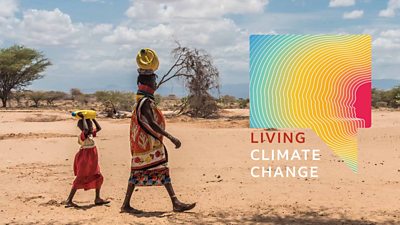The rare times that Nepal makes international headlines, it is often because of its snow-capped mountain peaks. Even climate change stories about Nepal largely focus on its mountains, neglecting a myriad of other, critical issues related to this unfolding human tragedy.
When we travelled to some remote Nepali mountain villages in September 2021 to produce two short films about climate change, we were trying not to repeat the same narrative about how global warming is accelerating glacier melt in the Himalayas; and how that could unleash a series of catastrophic events in the near future.
Instead, we wanted to capture the often-neglected impacts of climate change on human health - a crisis that is already being felt by people who have least contributed to global warming.
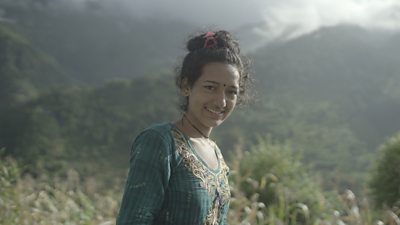
More mosquitoes and more malaria
In a remote village in Nepal's far-western hills, we met Nirmala Chanda, a 19-year-old girl. She had suffered from malaria early this year, and it looked like she was yet to fully recover from the disease.
Mosquitoes were not previously common in Nirmala's village. But the rising temperature has now enabled mosquitoes to survive and breed in the high hills and mountains of Nepal, spreading vector-borne diseases such as malaria, dengue and kala-azar.
We also met Parbati Bhat, a 58-year-old community health volunteer. She told us that as many as eight people have suffered from malaria -- a disease that was previously confined to the tropical lowlands of the country -- in her small village this year alone.
Nirmala and Parbati are among Nepalis who have least contributed to greenhouse gas emissions, but they are most vulnerable to the health impacts of climate change. They do not know technical terms such as climate change and global warming, but they are living it every day. Their voices are rarely heard even within the country, let alone at international forums such as COP26.
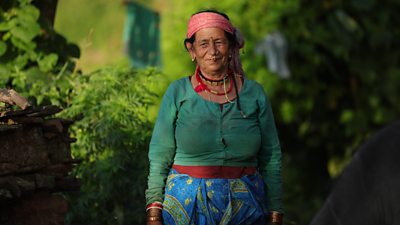
Reaching the unreached
As part of our film project, supported by Wellcome, aiming to capture the lived experience of communities weathering the effects of climate change, we wanted to reach the unreached people like Nirmala and Parbati.
In our short film Mosquitoes in the mountains, we follow Parbati Bhat as she goes around meeting community people affected by malaria. She asks them to use mosquito nets, remove stagnant water and keep their houses and outside areas clean to be safe from mosquito-borne diseases. This was not her job when she became a health volunteer 38 years ago. She had only heard of malaria back then from her family living in the lower-lying areas of Nepal.
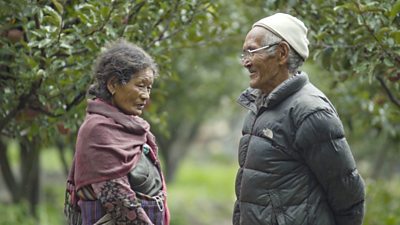
Landslides, floods and water pollution
For the other short film, When snow becomes rain, we crossed over the Himalayas to reach a high mountain village where we met Angyel Jung Bista, an 82-year-old apple farmer. He has lived in this village all his life. Just like Nirmala and Parbati, Angyel Jung Bista has felt the health impacts of climate change.
Angyel's village is nestled in the rain-shadow zone of Nepal, where rains were scarce, even during monsoon. But the rising temperature is leading to more frequent and intense rains in the region, triggering landslides and floods that pollute snow-fed rivers and rivulets.
Angyel told us that there was ample fresh meltwater in his village before, but heavy rainfall, flooding and landslides are now contaminating their water sources more often. As a result, his wife Chhutu Gurung has frequently had diarrhoea. Water-borne diseases have now become the second biggest health problem for people living in Angyel's village.
Understanding their lives
To capture the lived experience of people like Nirmala, Parbati and Angyel, we spent some time living with them to better understand their lives. The road to reach their village was full of craters and pits widened by monsoon downpour, and our vehicle broke down on the way. We carried our kit on our back and walked for four hours.
The journey to reach these remote mountain villages was challenging, but it was worth all the hardships we endured.
Watch the series
-
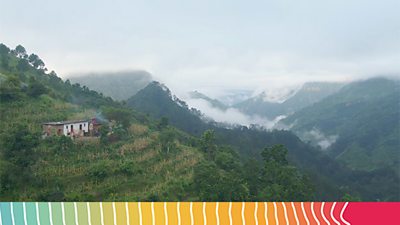
Mosquitoes in the mountains, Nepal
Mosquitoes and mosquito-borne diseases like malaria used to be confined to low-lying areas of Nepal. But in the last three years, there have been over 900 cases of malaria in the mountain regions. Parbati Bhat, who has been a community health volunteer for 38 years, says treating malaria cases has now become a new part of her role. -

The flood that took everything, Kenya
The consequences of extreme and unpredictable weather conditions can take a severe toll on mental health, as well as physical health. Pastoralist Lomilio Ewoi Erot lost his livelihood when his herd of hundreds of goats was swept away in a flood; he speaks of his struggles with mental health after becoming unable to provide for his family. -
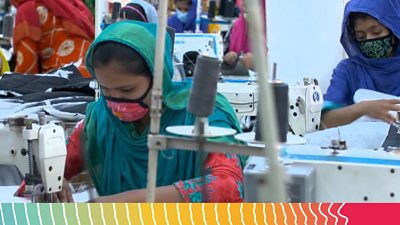
Feeling the heat, Bangladesh
Increasing temperatures, particularly in big cities like Dhaka, the capital of Bangladesh, have profound effects on human health. Nazma Begum, who lives in a slum in Dhaka, described the impact of working 14 hours a day in an overheated garment factory, while others suffer from skin conditions and heatstroke. -

When snow becomes rain, Nepal
Climate change is destabilising food production in many parts of the world. Angyel Jung Bista, an apple farmer in the village of Kabgeni in Nepal, struggles to grow apples as warmer weather, heavy rainfall and floods pollute the water, prevent apples from growing, and contribute to the spread of waterborne diseases. -

The long walk to water, Kenya
Pregnant Kenyan mother Esther Elaar walks over two hours a day to get to a water source, then carries a heavy, 20-litre jerrycan all the way home again. Prolonged droughts and changing weather patterns driven by climate change have made everyday life an increasing struggle for people in northern Kenya. Women in the region have noticed an increase in miscarriages and stillbirths which they attribute to the extreme conditions. -

Salt in the water, Bangladesh
In coastal regions in Bangladesh, increased levels of salt in fresh water are contributing to reproductive health problems and cardiovascular diseases. Shabjan Begum, who lives in a fishing village on the southern coast reliant on the saline water for food, water and fishing, knows these health risks first-hand, through her own experience and that of her family and neighbours.
Behind the scenes
-
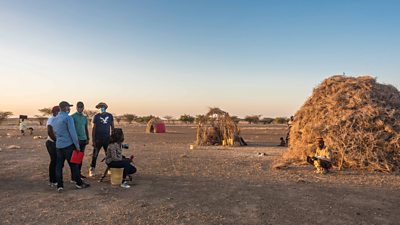
Behind the scenes in Kenya
Our project director Diana Njeru shares her reflections on extreme heat and drought, and their impacts on health, in northern Kenya. -

Behind the scenes in Nepal
Our communications manager, Om Rai, reflects on the journeys to meet Angyel Bista and Parbati Bhat. -
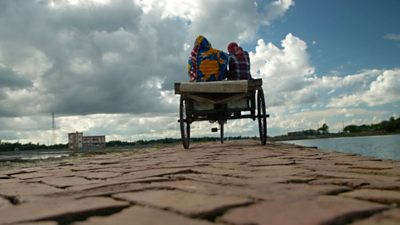
Behind the scenes in Bangladesh
Film producer Polash Rosul and Head of Production Bishawjit Das share the storygathering process behind our Living Climate Change series in Bangladesh.


